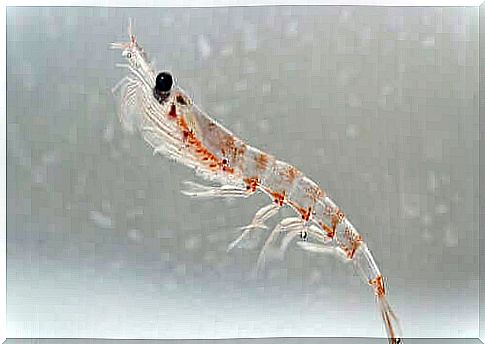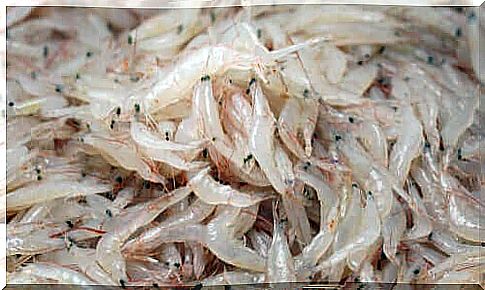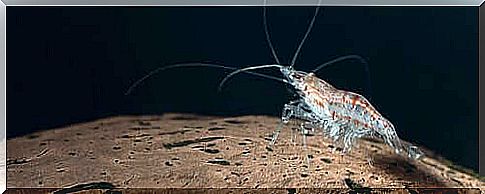The Importance Of Krill In Ocean Ecosystems

Learn all about the importance of krill, a term used to describe some 86 species of crustaceans that inhabit ocean ecosystems. They are known as euphrasides and are part of zooplankton that directly consume marine phytoplankton.
Among them, the best known – subject to commercial fishing – are Antarctic krill, Pacific krill and northern krill, which correspond mainly to the species Euphausia superba , Euphausia pacifica and Meganyctiphanes norvegica , respectively.
Adult krill euphrasids are between 5 and 12 centimeters long. In the early stage, larval forms of krill are often considered part of marine zooplankton.
Unity is strength
One feature of krill, perhaps the most ecologically important, is its gregarious nature. When these crustaceans reach their adult form, they begin to clump together in huge swarms.

The extent to which these concentrations reach can vary widely. Swarms were recorded ranging from a few square meters to 300 square kilometers. Aside from bacteria, the swarms that extend for miles in all directions represent the largest biomass on the planet.
How important is krill biomass in the oceans?
Remember that a food chain is a linear network of connections starting with producing or autotrophic organisms. This is the case of marine phytoplankton species with chlorophyll, which use the sun’s radiation to produce their food.
The chain progresses as autotrophic organisms become food for herbivorous organisms. This is the case of phytoplankton that are used as food for krill. This new link, in turn, supports other living beings, until it reaches predatory species, such as the lion, the brown bear or the man.
Finally, the chain culminates with the participation of detritivorous species that degrade organic waste. Some of these species are earthworms. The end of the chain also has decaying species – the microbiome – which includes fungi or bacteria.
Food chains inevitably relate to each other with all living organisms through the food we eat. Each level of a food chain represents a different trophic level.
Abundance and Distribution
As noted above, krill biomass may be the largest of all multicellular animal species on the planet. Thus, experts believe that krill present in ocean ecosystems represent the most abundant and successful animals on Earth.
Krill is exclusively marine and is distributed throughout the world’s oceans, generally to a depth of up to 200 meters. Its distribution gradient is often associated with the thermal characteristics of water columns.
Furthermore, their presence is also associated with other particular features of the oceanic ecosystem, such as upwelling areas. The emergence of deep bodies of water – rich in minerals and nutrients – from the deep ocean to the sea surface is known as upwelling.

Krill have the ability to travel great distances vertically. Most of the time, krill swarms remain submerged in water during the day and only appear at night.
Primarily for food, many species make pronounced daily vertical migrations and usually move more than 200 meters at night. It is not known why swarms are occasionally seen on the surface during the day.
Experts hope that detailed information about their daily vertical shifts can provide data to better understand their role in the biological cycles of the ocean ecosystem.
The economic importance of krill in ocean ecosystems
Krill is a store of large amounts of trace elements, vitamin A, various B vitamins and essential fatty acids. Krill paste, or krill-derived components, can be used as food for animals and in therapeutic diets for humans.
Its greatest importance is ecological, as krill is an important part of the diet of many animals. It is the food of whales, seals, countless species of fish, birds and, to a lesser extent, man.
Therefore, any factor that causes a decrease in the krill population can have far-reaching effects on the ocean ecosystem.
For example, the decrease in phytoplankton species consumed by krill can lead to a decrease in the population of other marine species that feed on krill, or indirectly of other species in the same food chain.







